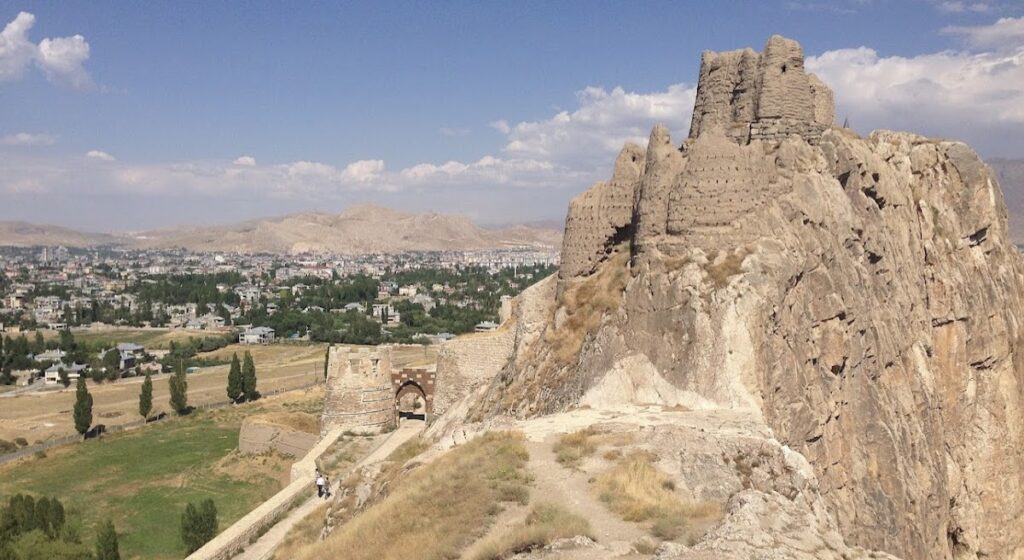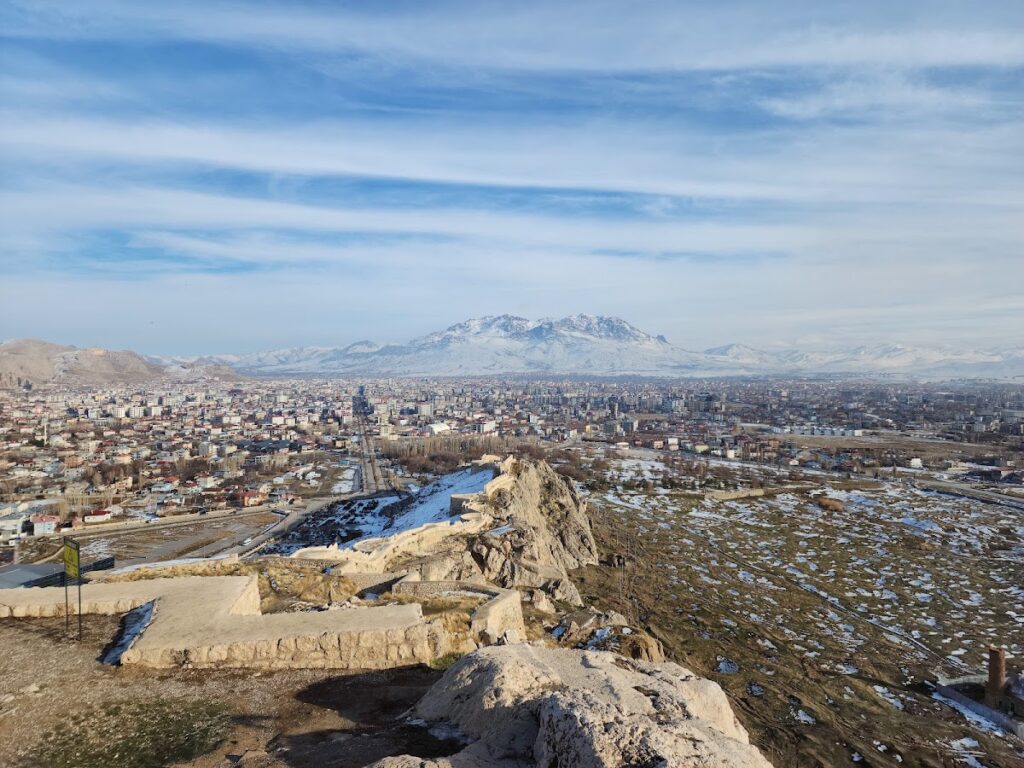Van Fortress: An Ancient Stronghold in Turkey
Visitor Information
Google Rating: 4.5
Popularity: Medium
Google Maps: View on Google Maps
Official Website: van.ktb.gov.tr
Country: Turkey
Civilization: Unclassified
Remains: Military
History
Van Fortress is located in the municipality of İpekyolu in modern-day Turkey. It was originally constructed by the ancient kingdom of Urartu between the 9th and 7th centuries BCE and served as the capital fortress for the city of Tushpa. Perched on a steep cliff overlooking the earlier ruins of Tushpa, this site was central to Urartian political and religious life during its early phase.
Following the Urartian period, the fortress came under the control of a succession of empires and peoples, reflecting the shifting powers in the region. Among these were the Medes and later the Achaemenid Persians, who incorporated the area into their vast empire. An important Achaemenid royal inscription carved on a smooth rock face near the fortress dates to the 5th century BCE and bears the names of kings Darius I, who initiated the inscription, and his son Xerxes I, who completed and ordered its inscription. This trilingual text, written in Old Persian, Elamite, and Babylonian languages, stands as the sole preserved Achaemenid royal inscription found outside the borders of present-day Iran.
In subsequent centuries, Van Fortress was successively occupied by Armenians, Parthians, Romans, Sassanian Persians, Byzantines, Arabs, Seljuks, Safavids, Afsharids, Ottomans, and Russians. Throughout these varied controls, the fortress was repeatedly repaired, modified, or damaged in response to the shifting strategic and administrative needs of its occupants. Despite these changes, the fortress primarily functioned as a means to exert regional authority rather than to repel large-scale foreign invasions. The defensive walls visible today mostly date from the medieval period, reflecting the fortress’s long history of reuse and adaptation.
An American archaeological dig led by Silva Tipple New Lake took place between 1938 and 1940, further exploring the fortress’s layers of history. Sadly, many of the artifacts and records from this mission were lost when the ship carrying them sank in 1940.
Remains
Van Fortress stretches roughly 1800 meters in length, rises to about 120 meters in height, and is approximately 80 meters wide. The lower fortress walls are built from large, unworked basalt stones assembled without mortar, showcasing an ancient construction style suited to the steep terrain. The upper sections of the walls incorporate brick and wooden beams, materials likely added in later periods to reinforce or rebuild the structure. The fortress is situated on a high cliff with commanding views over the ruins of Tushpa beneath and Lake Van to the west, emphasizing its strategic position.
Within the fortress lies a rock-cut enclosure known as the “Royal Enclosure” or “Royal Table,” measuring approximately 20 meters long, 9 meters wide, and 2.5 meters high. Archaeological inscriptions found at the site indicate this carved space was used to hold bulls and sheep destined for sacrifice to Urartian gods, highlighting the fortress’s religious importance during the kingdom’s rule.
Near the fortress, about 20 meters above the ground on a smoothed rock face, is a prominent carved inscription from the Achaemenid period. This notable inscription is divided into three columns with 27 lines each and is written in Old Persian, Elamite, and Babylonian. It remains well preserved and represents the only known royal Achaemenid inscription found beyond Iran’s modern borders. The text is engraved within a niche and embodies a significant link between the fortress and the broader Persian imperial world.
The fortifications visible today largely reflect medieval construction, forming defensive walls built atop or alongside the ancient Urartian foundations. These medieval walls have survived in varying conditions, standing outside the limits of modern Van city and providing insight into how the fortress was reused across centuries. The continual repairs and modifications by successive rulers illustrate Van Fortress’s long-standing role as a seat of regional power.





